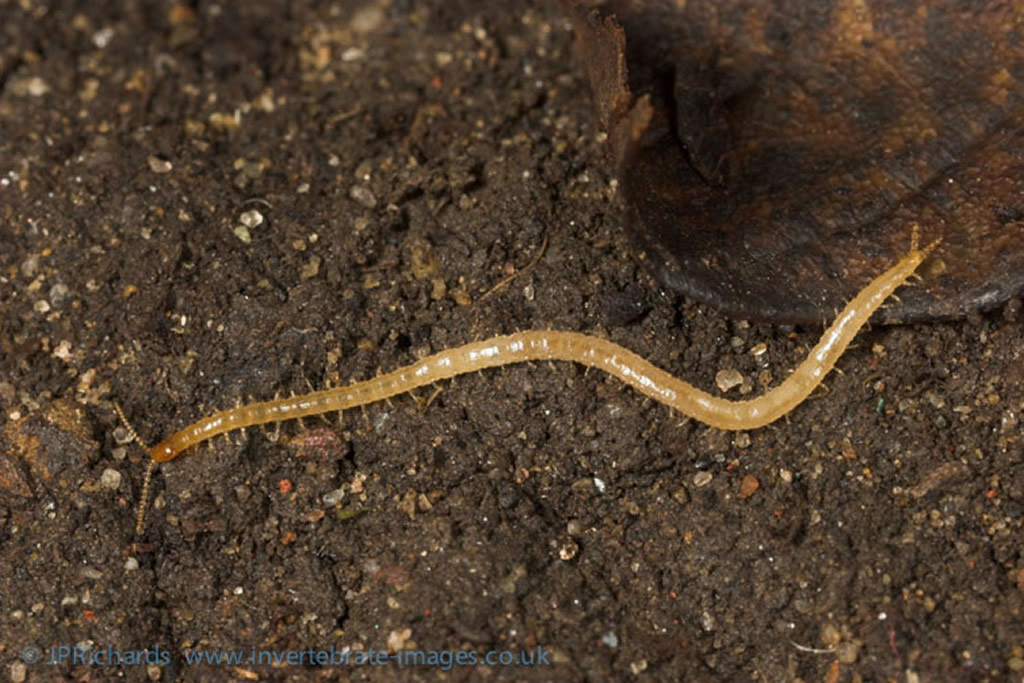Schendyla nemorensis (C.L. Koch, 1837)
Status:
GB IUCN status: Least Concern
ID Difficulty
Identification
Schendyla species are small pallid centipedes typically with conspicuously swollen last legs that lack claws and bear two large coxal pores at the base of each.
Schendyla nemorensis is a small straw coloured centipede (to 20 mm) with a slightly darker head, with just 37-43 leg pairs. It is very similar in appearance to the elusive S. dentata and the coastal S. peyerimhoffi but differs in the shape of the last legs (especially the distal metatarsus - which is elongated in S. nemorensis). It also bears a superficial resemblance to the common Geophilus truncorum (which has claws on the last legs), which can occur in similar habitats.
More information to allow accurate identification is given in the published identification keys by Tony Barber (2008 & 2009).
Distribution
Schendyla nemorensis is a common species in southern Britain and southern Ireland, becoming much scarcer further north, but it has been recorded from Orkney and Shetland.
Habitat
It can be found in a wide array of habitats, including woodland, grassland, churchyards, gardens and on the coast. It is soil typically soil dwelling, occurring under stones and dead wood, but also in tussocks and under loose bark on trees.
This account is based on the 'Centipede Atlas' (Barber, 2022).
Links
ChiloBase 2.0 - World Catalogue of Centipedes: https://chilobase.biologia.unipd.it/searches/result_species/3786







